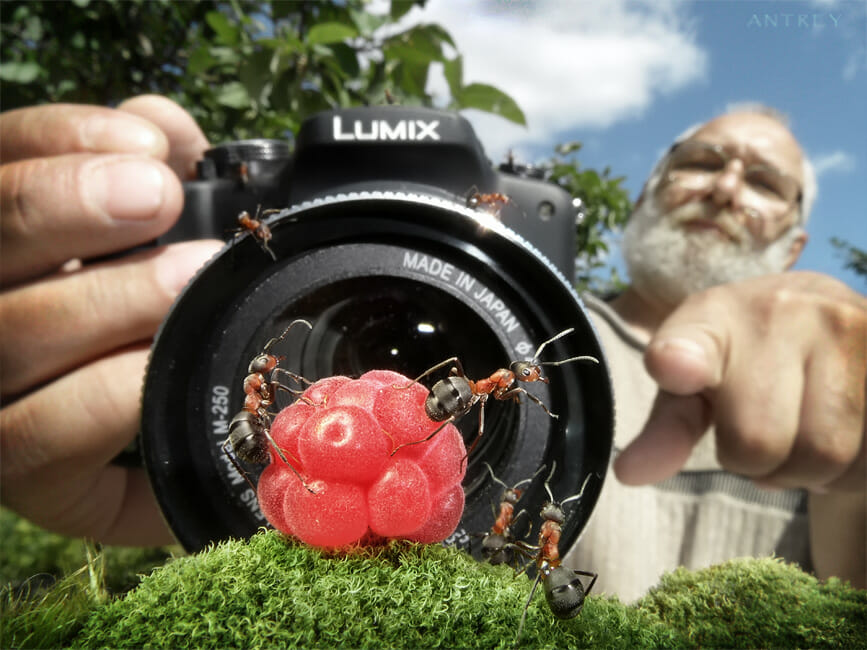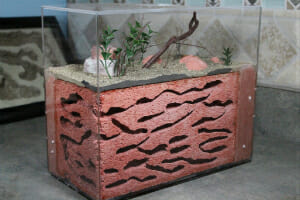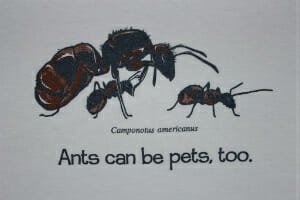Ant Farms for Grownups
Step aside, junior — ant farms aren’t just for kids.
Ant Farms for Grownups
Step aside, junior — ant farms aren’t just for kids.

Mature ant colonies contain thousands of individual ants, practically every one of them a female athlete that can sprint a marathon and lift multiple times her bodyweight. Ants have their own implementations of daycare, graveyards and garbage disposal. You get to watch them kill bugs. Why don’t you have thousands of your own?
If you harbor fond memories from home or school of the classic green ant farm, that acrylic picture of lonely, confused ants framed by the Uncle Milton logo, you’ll be glad to know that the hobby of maintaining ant colonies complete with queen is alive and well today, and it’s better than it’s ever been. Hobbyist ant-keepers operate across a spectrum of motivations, ranging from the deeply scientific to “bugs are cool.” Whatever your reason for keeping ants, you should know that we now refer to the ant farm by its serious name of formicarium.

A formicarium amounts to a standard terrarium with a pre-formed nest configuration inside, butting up against the glass so that you can see what your ants are up to underground. It’s common to connect a formicarium to an outworld via a length of tube. The outworld is a conventional terrarium that more accurately facilitates the ants’ natural foraging instincts (it’s where they kill the bugs). Once you have these two components, you only need a queen.
A queen ant will keep you with ants for years instead of weeks. She only needs to mate once, then she’s set to be cared for by her daughters and lay eggs as long as she’s alive. Queen ants perpetuate life for their colonies and give them their meaning — this is why they were always lacking from the ant farms of our youth.
Laws are such that you generally can’t buy a queen and instead must capture her in the wild. Mikey Bustos runs Ants Canada, an ant supply storefront that sprang up to cater to hobbyist interest around the world. He told us that the prime time to catch a queen is “during mating season when they have annual nuptial flights – young queens and winged males mate together in the air. After mating, the males die and females venture off in search of a suitable place to nest and start their new colonies.” At this point it’s easy to spot a fledgling colony entrance: a small hole in the ground that resembles a crescent moon. Dig down several inches and you’ll find a newly pregnant queen. Gather her in a test tube along with any workers and eggs that she’s laid, place them in your formicarium, and watch them go to work on moving in (though it might them take some time to do so).
With nothing more than a fresh supply of food and water every two to three days, your new colony is set to thrive. As a general guideline, protein-rich insects and meaty kitchen scraps are perfect for younger ants’ physiological development, while sweeter sugary things are good for energizing the older ants who forage above ground. Ants have two stomachs: one for themselves and one for sharing food directly with other ants (called a “social stomach”).

“Ants are arguably the greatest success story in the history of terrestrial metazoa,” writes entomologist Simon Schultz. They’ve been pretty good at this thing called “life” for many millions of years. With over 12,000 individual ant species on the planet, they’ve developed a number of surprising strategies for flourishing at our feet. Mack Pridgen, who runs ant supply store Tar Heel Ants, shares one of his favorites: “Camponotus saundersi, among other ants in the genus, can rupture a gland inside their bodies that not only kills them but also serves as a method of colony defense. Amazing act of selflessness.” Quite literally, these ants are suicide bombers.
Ants may look like absolute monsters up close, but we’re certain you can come to love them. They live in and on the ground we usually ignore, and they’ve done so without interruption for millions of years. You know the asteroid that killed the dinosaurs? Ants survived that, and right now you’ve got their relatives on your kitchen counter. Why not round ’em up and start a farm?
Formicarium, that is.
Product shots courtesy Tarheel Ants.
Follow us
This work is licensed under a Creative Commons Attribution-NoDerivatives 4.0 International License.
Want to republish a Modern Farmer story?
We are happy for Modern Farmer stories to be shared, and encourage you to republish our articles for your audience. When doing so, we ask that you follow these guidelines:
Please credit us and our writers
For the author byline, please use “Author Name, Modern Farmer.” At the top of our stories, if on the web, please include this text and link: “This story was originally published by Modern Farmer.”
Please make sure to include a link back to either our home page or the article URL.
At the bottom of the story, please include the following text:
“Modern Farmer is a nonprofit initiative dedicated to raising awareness and catalyzing action at the intersection of food, agriculture, and society. Read more at <link>Modern Farmer</link>.”
Use our widget
We’d like to be able to track our stories, so we ask that if you republish our content, you do so using our widget (located on the left hand side of the article). The HTML code has a built-in tracker that tells us the data and domain where the story was published, as well as view counts.
Check the image requirements
It’s your responsibility to confirm you're licensed to republish images in our articles. Some images, such as those from commercial providers, don't allow their images to be republished without permission or payment. Copyright terms are generally listed in the image caption and attribution. You are welcome to omit our images or substitute with your own. Charts and interactive graphics follow the same rules.
Don’t change too much. Or, ask us first.
Articles must be republished in their entirety. It’s okay to change references to time (“today” to “yesterday”) or location (“Iowa City, IA” to “here”). But please keep everything else the same.
If you feel strongly that a more material edit needs to be made, get in touch with us at [email protected]. We’re happy to discuss it with the original author, but we must have prior approval for changes before publication.
Special cases
Extracts. You may run the first few lines or paragraphs of the article and then say: “Read the full article at Modern Farmer” with a link back to the original article.
Quotes. You may quote authors provided you include a link back to the article URL.
Translations. These require writer approval. To inquire about translation of a Modern Farmer article, contact us at [email protected]
Signed consent / copyright release forms. These are not required, provided you are following these guidelines.
Print. Articles can be republished in print under these same rules, with the exception that you do not need to include the links.
Tag us
When sharing the story on social media, please tag us using the following: - Twitter (@ModFarm) - Facebook (@ModernFarmerMedia) - Instagram (@modfarm)
Use our content respectfully
Modern Farmer is a nonprofit and as such we share our content for free and in good faith in order to reach new audiences. Respectfully,
No selling ads against our stories. It’s okay to put our stories on pages with ads.
Don’t republish our material wholesale, or automatically; you need to select stories to be republished individually.
You have no rights to sell, license, syndicate, or otherwise represent yourself as the authorized owner of our material to any third parties. This means that you cannot actively publish or submit our work for syndication to third party platforms or apps like Apple News or Google News. We understand that publishers cannot fully control when certain third parties automatically summarize or crawl content from publishers’ own sites.
Keep in touch
We want to hear from you if you love Modern Farmer content, have a collaboration idea, or anything else to share. As a nonprofit outlet, we work in service of our community and are always open to comments, feedback, and ideas. Contact us at [email protected].by Tom Zimmerman, Modern Farmer
September 23, 2014
Modern Farmer Weekly
Solutions Hub
Innovations, ideas and inspiration. Actionable solutions for a resilient food system.
ExploreExplore other topics
Share With Us
We want to hear from Modern Farmer readers who have thoughtful commentary, actionable solutions, or helpful ideas to share.
SubmitNecessary cookies are absolutely essential for the website to function properly. This category only includes cookies that ensures basic functionalities and security features of the website. These cookies do not store any personal information.
Any cookies that may not be particularly necessary for the website to function and are used specifically to collect user personal data via analytics, ads, other embedded contents are termed as non-necessary cookies.
Glad you have this info, but I was looking for one more natural, with ants making their own tunnels. No tubing or other spaces for eggs, etc. Natural.